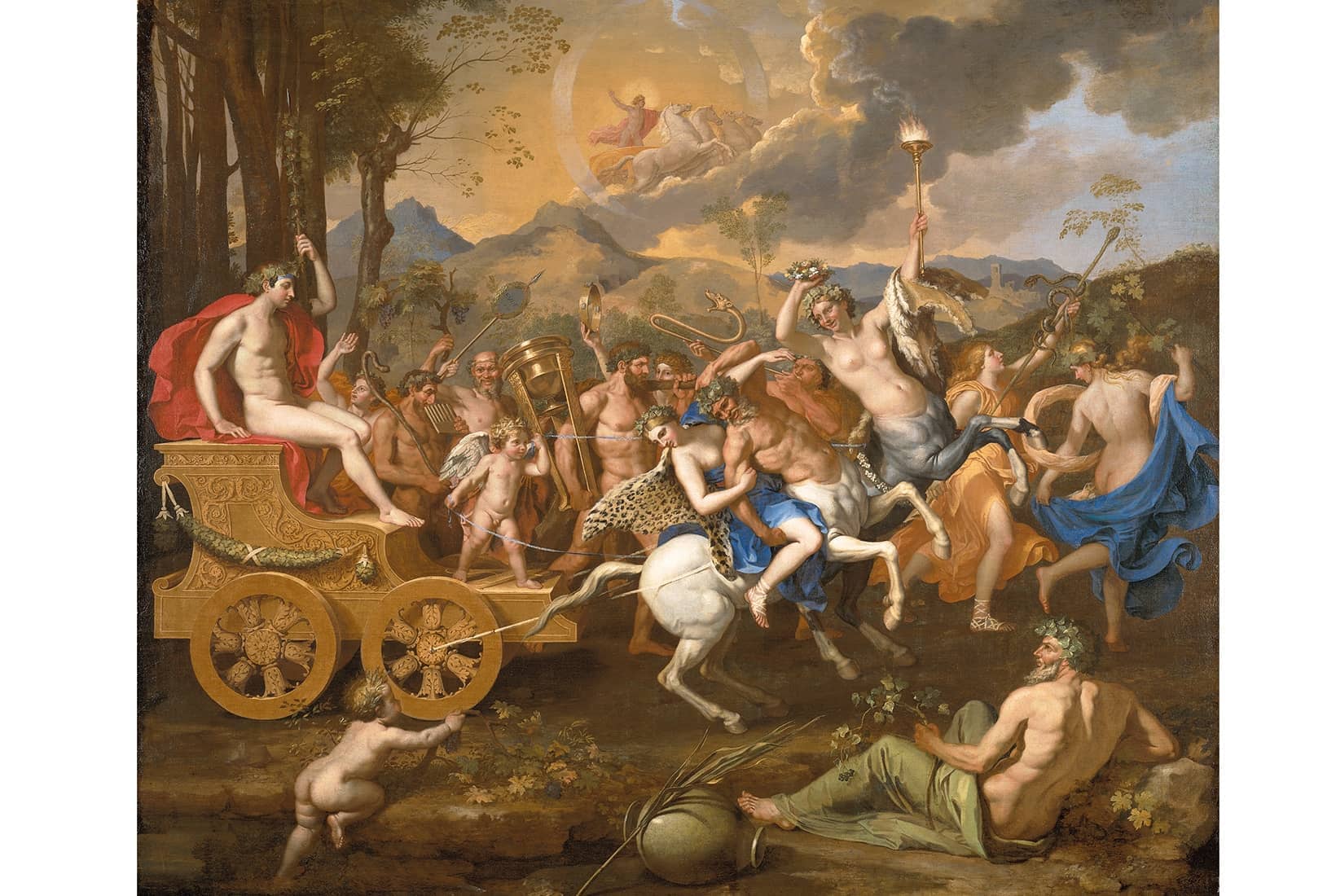In the winter of 1861, visitors to the Louvre might have seen a young artist painstakingly copying one of the museum’s 39 paintings by Poussin. The subject was ‘The Abduction of the Sabine Women’ and the artist was the 27-year-old Edgar Degas, then at work on his own classical battle of the sexes, ‘Young Spartans’.
Although lumped with the impressionists, Degas was a classicist at heart. ‘The masters must be copied over and over again,’ he believed, ‘and it is only after proving yourself a good copyist that you should reasonably be permitted to draw a radish from nature.’ A dedicated copyist himself, Poussin would have approved. The paintings in Poussin and the Dance at the National Gallery copy from Titian, Annibale Carracci, Giambologna, Reni, Raphael, Mantegna — and especially from Roman sculpture, as illustrated by the two Roman vases and ‘The Borghese Dancers’ bas-relief included in the exhibition.
The National Gallery hopes to show the frisky side of a classical master normally seen as cold and austere
By reassembling all the paintings with dancing figures that Poussin made after arriving in Rome, aged 30, in 1624, the National Gallery hopes to show the frisky side of a classical master normally regarded as cold and austere. With Poussin, though, even tripping the light fantastic has its dark side: the dancing goddess in his sunny ‘Realm of Flora’ (1630–31) is scattering petals over miserable mortals being turned into flowers at the whim of the gods. A definition of dance that takes in bacchanals — basically drunken orgies involving a bit of cloven hoofing by satyrs with maenads — and violent abductions — otherwise known as rapes — is certainly broad. The pretext for the latter’s inclusion is that their ‘martial choreography’ is balletic. Whatever, they’re no thés dansants.
But we live in more puritanical times.








Comments
Join the debate for just £1 a month
Be part of the conversation with other Spectator readers by getting your first three months for £3.
UNLOCK ACCESS Just £1 a monthAlready a subscriber? Log in